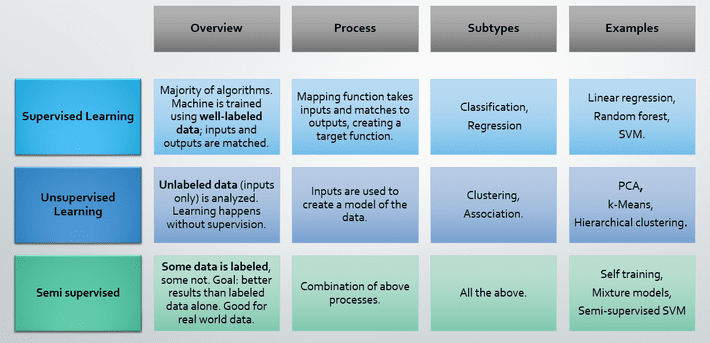AWS ML Speciality (Part 3.1)
07 Feb 2023This post gives a quick review on the framing of business problems as machine learning problems.
Frame business problems as machine learning problems
Determine when to use/when not to use ML
Use ML when:
- There is tons of data that need to be analyzed for patterns that can be used to make predictions
- You cannot code the rules. No simple rule-based solution is possible
- You cannot scale (say, to manually recognize a few million emails)
Don’t use ML when:
- You want to solve a simple problem for which a rule-based solution would suffice
- You don’t have labeled data and in-house expertise
Best practics when deciding on ML problem:
- define success criteria
- establish a performance metric
- define inputs, outputs and metrics
- decide if ML suitable?
- data sourcing and annotation objectives
- select a simple model
Know the difference between supervised and unsupervised learning
 (From here)
(From here)
Two types of classification: binary and multiclass
Selecting from among classification, regression, forecasting, clustering, recommendation, etc
Machine learning
- Supervised learning
- Classification
- Regression
- Unsupervised learning
- Clustering
- Topic modeling
- LDA (Latent Dirichlet Allocation)\(^\star\)
- NTM (Neural Topic Model)\(^\star\)
- Topic modeling
- Embeddings
- Object2Vec\(^\star\)
- Anomaly Detection
- Random Cut Forest\(^\star\)
- IP Insights\(^\star\)
- Dimensionality Reduction
- Principle Component Analysis (PCA)\(^\star\)
- Clustering
 (From here)
(From here)
Sagemaker algorithms for each of them: